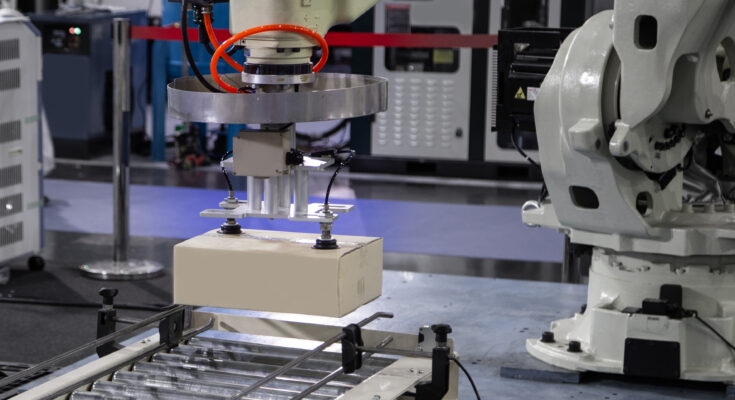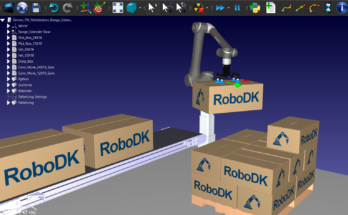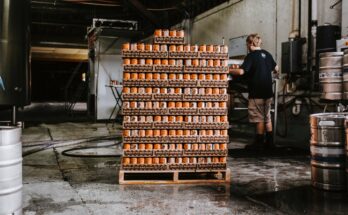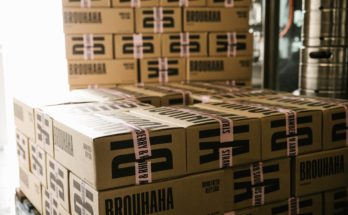You’ve got a big packing task and you think it could be good for robotic palletizing…
But are all objects suitable for palletizing with a robot?
It’s not always easy to tell what you can and can’t achieve with a robot. Sometimes a task looks easy on the surface (e.g. easy for a human worker to do) but it becomes ridiculously challenging with a robot. Then, other tasks are far easier with a robot than with any other means.
Robots are extremely adaptable. With the right end effector, you can manipulate practically anything.
But, palletizing can be tricky to judge.
Palletizing robots usually deal with very large and heavy objects. Some objects are suitable for palletizing whilst others are perhaps better suited to related applications like picking or packing.
How can you tell if your objects will work with robotic palletizing?
What Makes a Good Palletizing Object
Palletizing is just one of several types of tasks involved in the process of packaging products.
Related tasks are picking and packing. In general, these deal with products at an earlier stage of packing. For example, picking might be done to move individual products into a tray whilst packing would be moving those trays into a box.
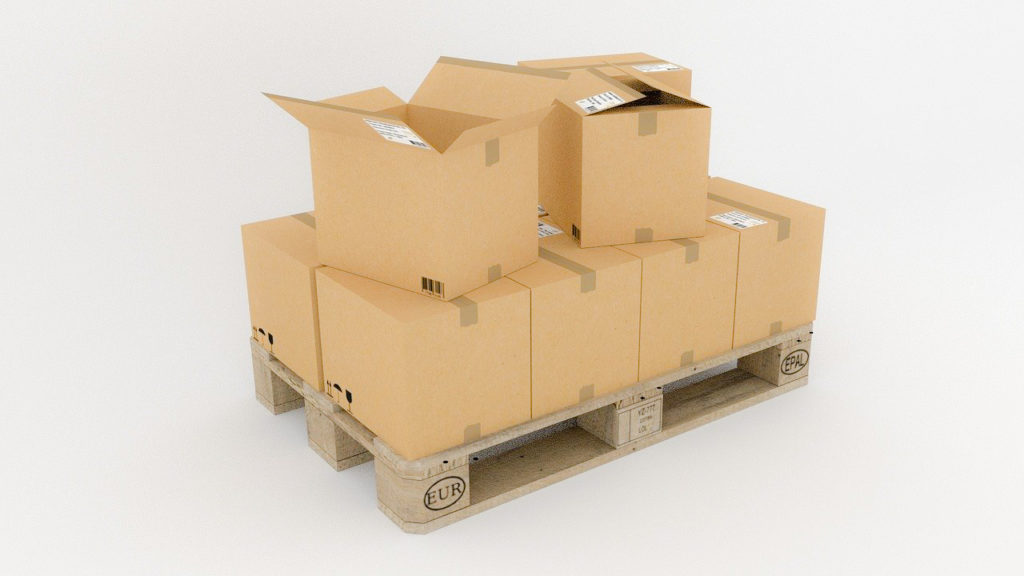
Objects that are well suited to robotic palletizing are those that are already packaged in some way and are ready to be stacked on a pallet, conveyor, or another surface.
Some properties of good palletizing objects are:
- Smaller objects are already packaged together so they won’t fall apart in transit.
- Objects are relatively uniform in size and shape (though mixed palletizing is possible).
- Objects can be balanced in weight when stacked onto pallets.
Although many robots are suitable for palletizing, it is most common to use a special palletizing robot. You can find various examples of these in our Robot Library.
10 Objects That Are perfect for Robotic Palletizing
Here are 10 objects that are perfectly suited to robotic palletizing and are often found in palletizing applications:
1. Boxes
Probably the most common object, boxes are very easy to palletize. They are a uniform shape and are easy to stack on top of each other. Unlike several of the other items on this list, boxes make it easy to avoid “lost space” on your pallet due to their shape.
2. Bags or Sacks
Another very common object, bags or sacks have the unusual property that they are flexible, unlike most of the other items on this list. They are often filled with substances like flour, grain, pellets, and other particulate matter.
Bags are most commonly lifted using a special end effector consisting of a set of horizontal claws that grasp under the bag without piercing it. Sometimes, a vacuum is also used to improve grasp stability and cycle time.
3. Buckets or Pails
Buckets or pails are often used to transport liquids such as paint, solvents, or foodstuffs. They are easiest to stack onto a pallet when they have a uniform height. It is possible to palletize buckets with different widths onto the same pallet by using a horizontal divider between the layers. If the buckets are the same size and shape, you may be able to stack them without a divider.
There will always be “lost space” on a pallet of buckets due to the cylindrical shape of the buckets.
4. Drums
Large drums can also be palletized with a robot in a similar way to buckets and pails. The main difference is one of size and weight. Drums are usually much heavier than buckets so you can fit fewer of them on a pallet and the robot must be able to handle the increased payload.
5. Bales
Many materials are transported in the form of bales, including recycled plastics, metal, rubber, straw, foodstuffs, and more. These are often less flexible than bags because the materials have been packed together densely. As a result, they are easier to move around and stack on top of each other, though some materials may be more prone to movement and so require extra fixing.
6. Parcels
Indeed, parcels – e.g reams of paper – are wrapped in a thin layer of material to hold the objects within, making them more fragile than boxes. Parcels tend to have a little bit more flexibility than a box so can require extra support by the end effector. However, they are not as flexible as bags.
7. Stacks
Some items, such as tubes, can be a challenge for palletizing as they tend to roll over each other. However, by tying the objects together it is possible to palletize stacks of products.
This can be achieved for many different stacks of objects, as in this example with stacked paper plates:
8. Cases
Open-topped cases — e.g. of packaged foodstuffs — can also be palletized with a robot. It may be necessary to stabilize the contents by adding shrink wrap onto the top or sizes of each case to ensure that items do not fall out in transit.
9. Crates
Crates, such as those used to carry bottles, can be palletized quite easily. Although they are also open-topped, they are made of strong enough material (usually hard plastic) that they can be stacked on top of each other easily.
10. Bottles
Finally, bottles are an extremely common object for robotic palletizing. While they are sometimes palletized in crates or boxes, it is also possible to palletize bottles with no extra packaging.
As with buckets and pails, it is necessary to add a horizontal dividing layer (usually a sheet of cardboard) between each layer of bottles to improve the stability of the pallet.
What Application Will You Choose?
As you can see, there are many options for objects that are suitable for robotic palletizing.
If you think that your task could be suitable for robotic palletizing, one of the best ways to find out is to test it using a good robot simulator and see it for yourself.
We have upgraded the palletizing plugin with the latest version of RoboDK. Download a trial copy and try it out for yourself.
What type of objects are you thinking of palletizing? Tell us in the comments below or join the discussion on LinkedIn, Twitter, Facebook, Instagram, or in the RoboDK Forum.

